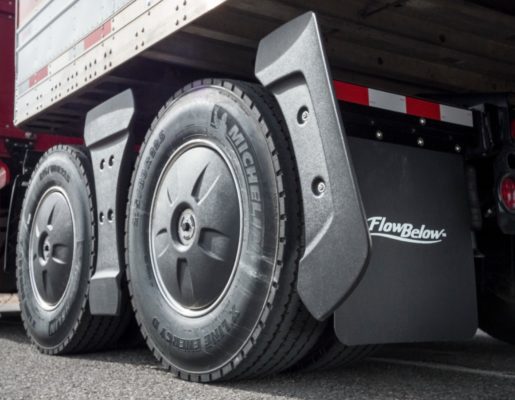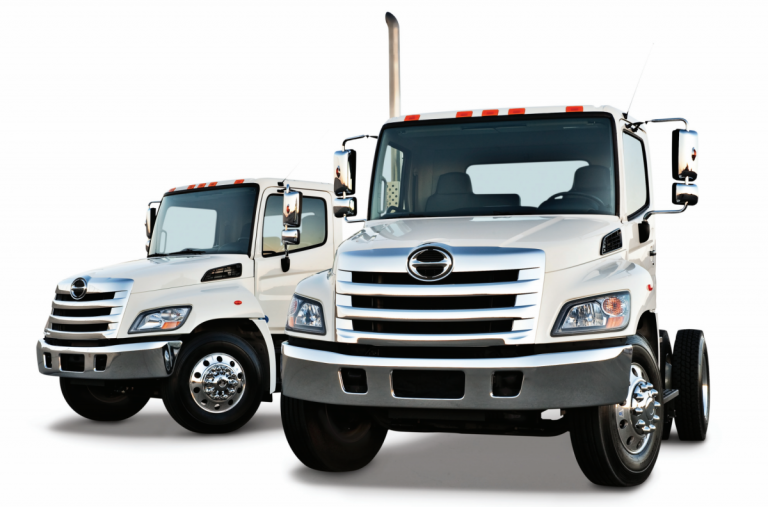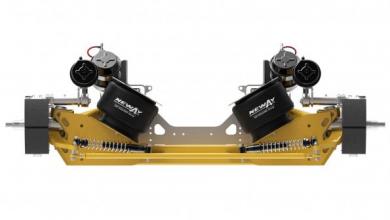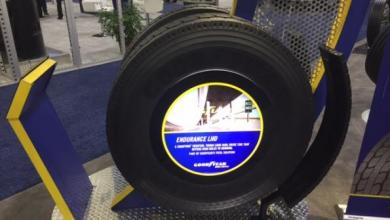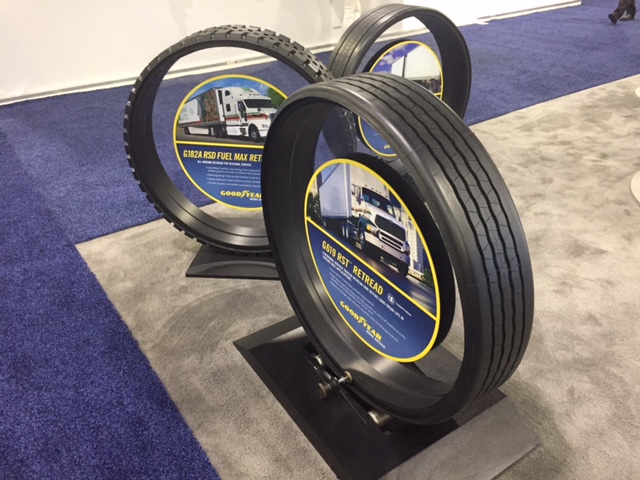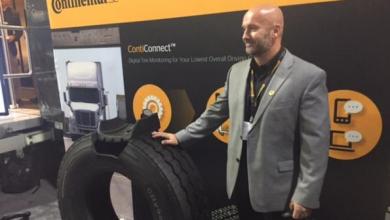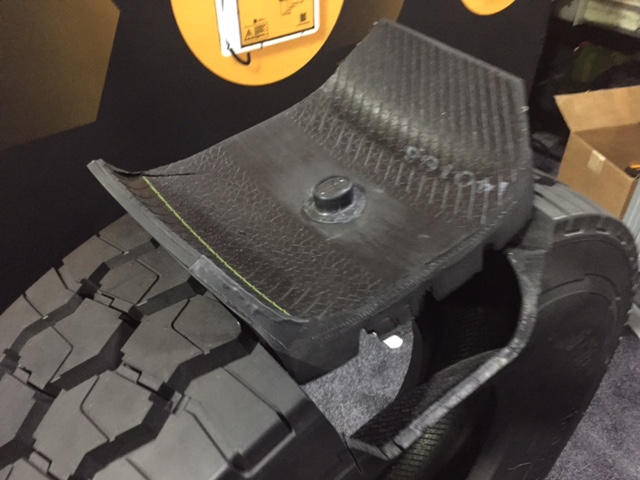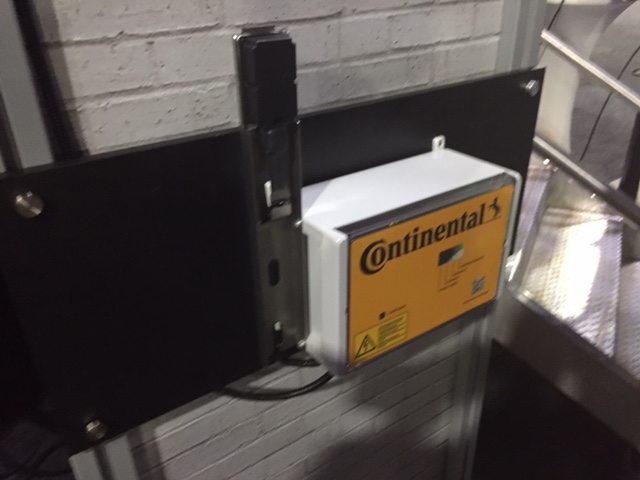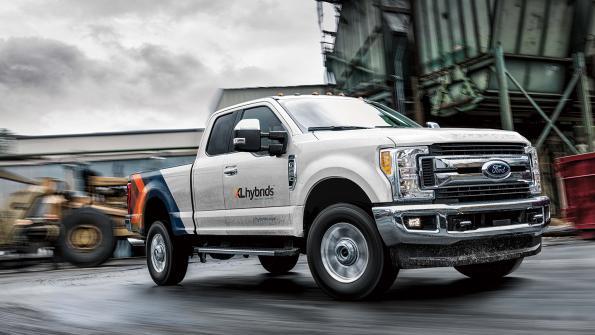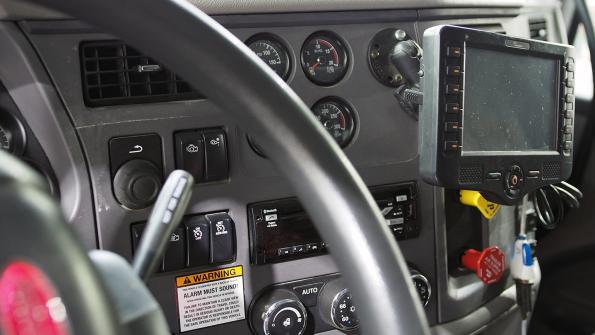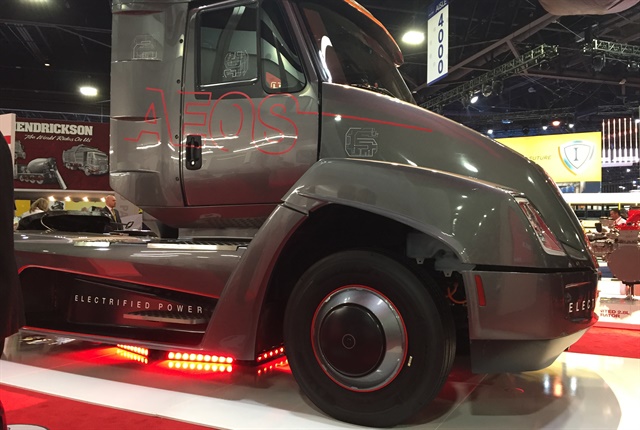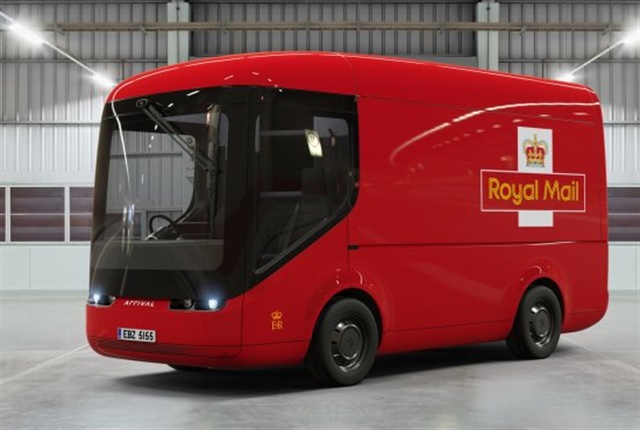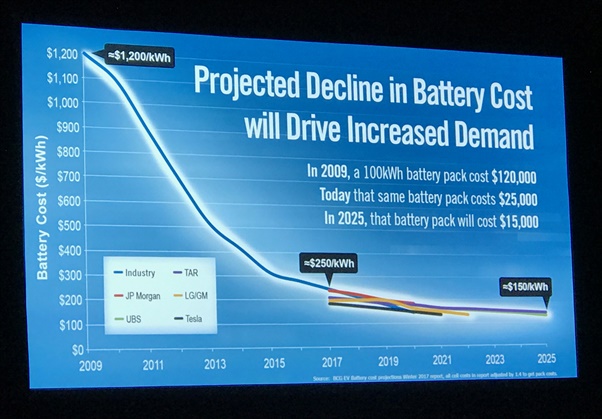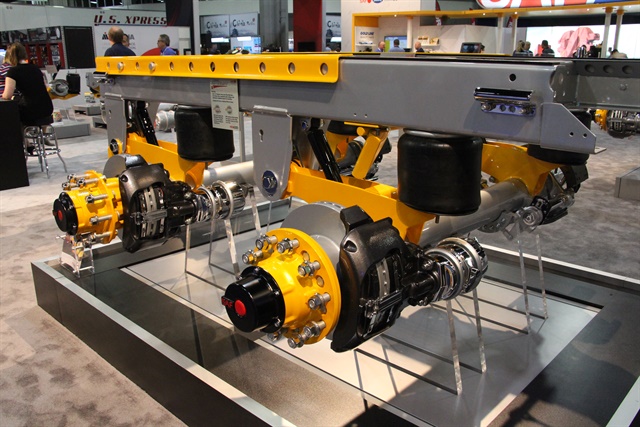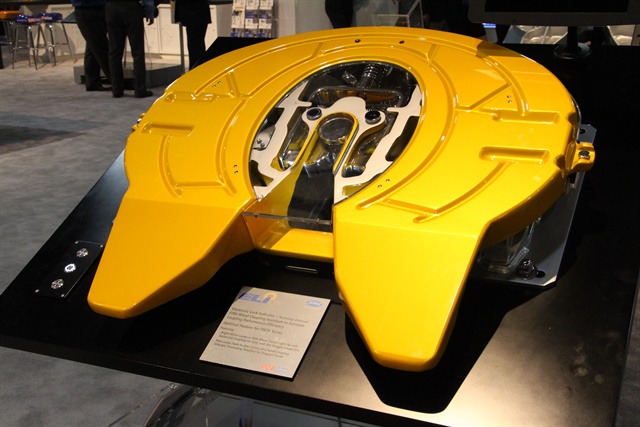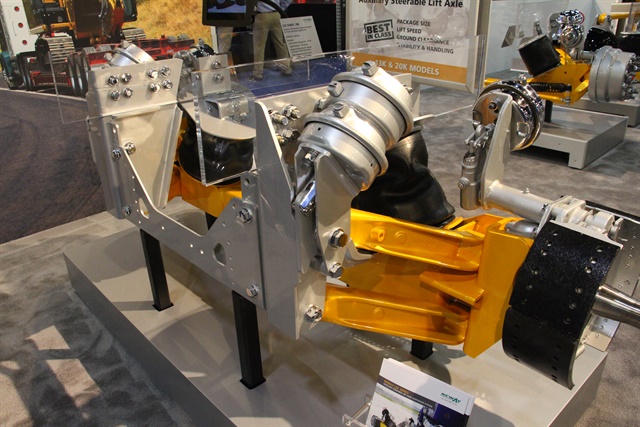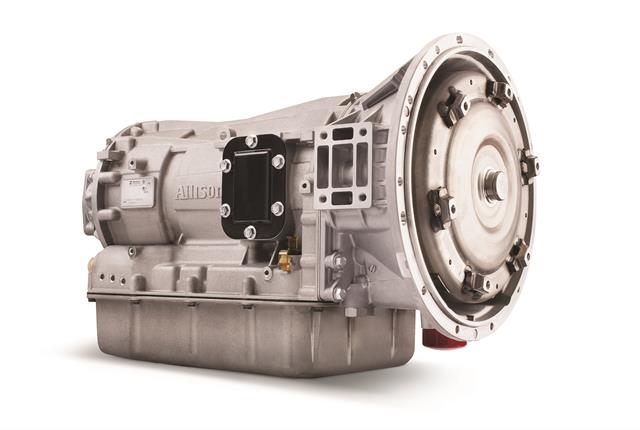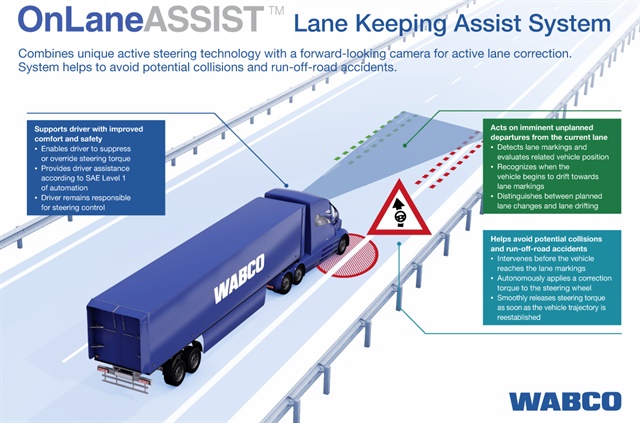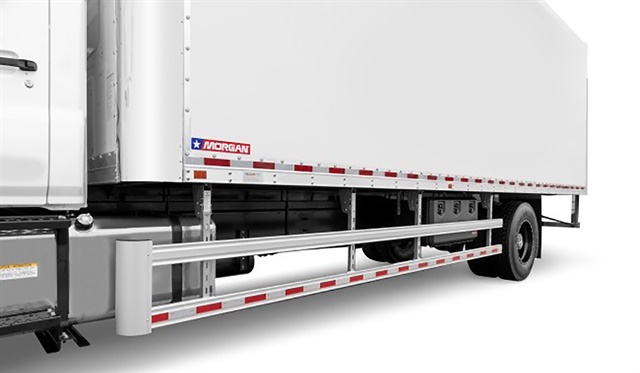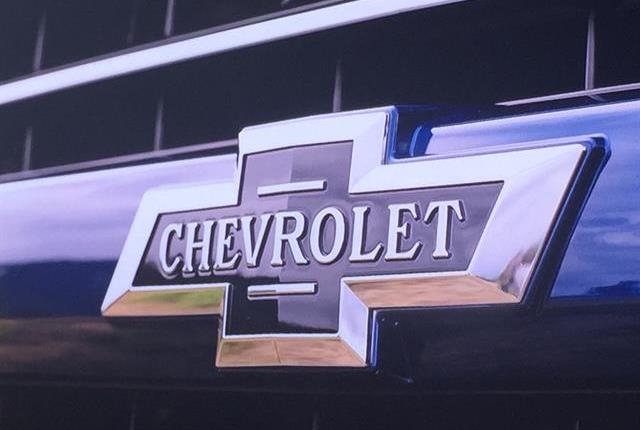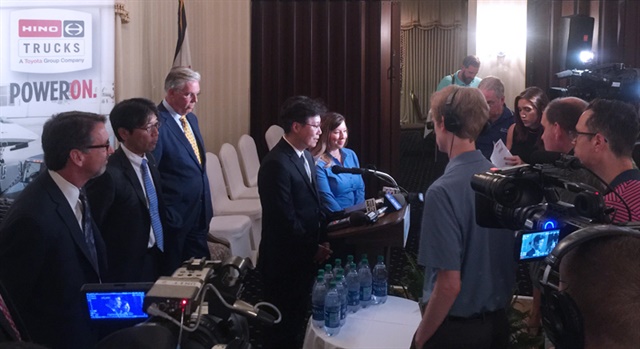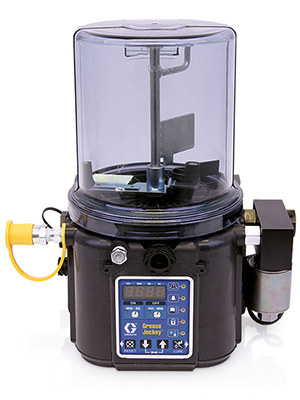
kscarbel2
Moderator-
Posts
17,893 -
Joined
-
Days Won
86
Content Type
Profiles
Forums
Gallery
Events
Blogs
BMT Wiki
Collections
Store
Everything posted by kscarbel2
-
Eberspaecher introduces next generation 1Box aftertreatment system
kscarbel2 replied to kscarbel2's topic in Trucking News
Eberspaecher shows off emissions control systems Truck News / September 28, 2017 ATLANTA, Ga. – Eberspaecher, best known for its climate control systems, brought its line of exhaust aftertreatment systems to the North American Commercial Vehicle show. Jack Riddle, director, advanced product engineering, said Eberspaecher supplies emissions control systems to OEMs including Mack, Volvo, and Daimler – both in North America and abroad. Advances in their design have made the systems more compact, and now confined to a single canister. “We are one of the largest suppliers of diesel aftertreatment systems to OEMs,” Riddle explained. The one box system houses the diesel oxidation converter, a diesel particulate filter, and the selective catalytic reduction (SCR) system. The systems remove harmful particulate matter and NOx from the exhaust before it’s released into the air and is how truck manufacturers comply with stringent emissions requirements. To properly maintain the system, Riddle suggested following the OEM guidelines for scheduled maintenance. A trend he seems emerging in the future is for fabricated manifolds in commercial vehicles, which can improve the performance of the catalyst. -
FlowBelow Adds Quick-Release Option for Fairings
kscarbel2 replied to kscarbel2's topic in Trucking News
FlowBelow makes its AeroKit driver-friendly Truck News / September 28, 2017 ATLANTA, Ga. – FlowBelow announced it has enhanced its flagship fuel-saving Tractor AeroKit system by adding a new “quick-release” fairing option. The new easy-to-use AeroKit was introduced and on display at the inaugural North American Commercial Vehicle (NACV) show that took place in Atlanta this week. The new quick-release mounting system allows the driver of the truck to remove the fairings easily in seconds and without tools. The older model used traditional bolts, which would take the driver several minutes to remove and would require the use of tools. Now, said Josh Butler, the CEO and Founder of FlowBelow, all drivers or operators have to do is turn the new fasteners and the fairing will release in just seconds. “In just 3-4 seconds, you can now get full access between the wheels,” Butler said. “This is especially significant for drivers because they’re not trained mechanics, they shouldn’t have to go find a tool to remove this product. So we’ve made it really easy for them. They already have a difficult job so we wanted to make the product as simple as possible for them.” According to Butler, the AeroKit maximizes the aerodynamic performance of a fleet’s wheel covers by also controlling the airflow between the wheels and behind the wheels. Based on SAE fuel economy testing, the fairings have demonstrated a significant fuel savings of 2.23% in combination with wheel covers, which is over three times the fuel savings of wheel covers alone. “With the exception of the Freightliner Cascadia with Aero package, which comes standard with our wheel covers, over 80% of our customers utilize the complete AeroKit as opposed to wheel covers alone,” Butler said. “Most fleets cannot even measure the fuel savings of wheel covers by themselves. By enhancing our AeroKit with quick-release fairings we are targeting customers that desperately want achieve the maximum fuel savings possible without creating extra work for their mechanics and drivers.” The quick release fairing option is available today and can be retrofitted, Butler added. . -
Hino to launch heavy trucks in North America
kscarbel2 replied to kscarbel2's topic in Trucking News
Hino's heavy Class 8 is the 12.9-litre equipped 700 Series. However this Class 7 / Class 8 will be based on the heavier end of the mid-range Hino 500 Series. http://www.hino.com.au/500/ -
Hino to launch heavy trucks in North America
kscarbel2 replied to kscarbel2's topic in Trucking News
Hino building $100M W.Va. plant to assemble its new class 7 & 8 trucks Tom Quimby, Commercial Carrier Journal (CCJ) / September 28, 2017 A Class 8 Hino truck? Yes, that and a new Class 7 truck will be produced starting in 2019 at a new assembly plant that the company will be building in Mineral Wells, West Virginia, close to its current plant which recently celebrated a 10-year anniversary. Hino Motors Manufacturing U.S.A. President Takashi Ono made the announcement Wednesday at a press conference where local government officials and residents applauded the truck maker’s $100 million plant investment which is expected to add 250 jobs. “The new plant, which is four times the size of our current plant, will allow us to combine several assembly operations under one roof which will provide significant efficiency gains,” Ono said. “In addition to producing our current winning line-up of trucks, we will start the production of new Class 7 and Class 8 trucks in 2019,” Ono continued. Those new trucks, which will be powered by Hino’s 300-360 h.p. A09, 9-liter engine, will debut at the NTEA Work Truck Show next year. Hino’s new plant will be housed in the former Cold Water Creek distribution center. Besides truck production, the plant will also house cab assembly, an operation currently conducted in Japan. Though a family emergency prevented West Virginia Governor Jim Justice from attending the press conference, a representative read his prepared statement. “West Virginia has enjoyed a very good relationship with Hino. This new plant demonstrates that Hino has confidence in our state, and West Virginia is a great place to do business,” Justice wrote. “On behalf of everyone in the Mountain State, I thank Hino for their continued investment and the creation of new jobs.” As part of Hino’s growth plan, Hino broke ground last month on a new state of the art corporate office in Novi, Michigan. Hino is consolidating all operations in its new corporate headquarters, including sales, marketing, service, engineering, purchasing and manufacturing. Hino’s Insight Diagnostic Center, which monitors vehicle performance and uptime for all Hino trucks equipped with Insight, will also operate out of the Novi headquarters. “These are truly exciting times for Hino in the U.S. Our growth and customer acceptance in the Class 4-7 market are enabling us to introduce wider variety of products,” said Yoshinori Noguchi, CEO of Hino North America. . -
FlowBelow Adds Quick-Release Option for Fairings
kscarbel2 replied to kscarbel2's topic in Trucking News
FlowBelow introduces removable fairing Today’s Trucking / September 28, 2017 ATLANTA, GA – Those who regularly chain their tires now have the chance to enjoy FlowBelow's Tractor AeroKit system, thanks to new quick-release fairings between the wheels. Drivers can remove related fasteners in seconds and without tools, compared to the traditional fasteners used on the base model. “In just three to four seconds, you can now get full access between the wheels,” Butler said. “This is especially significant for drivers because they’re not trained mechanics, they shouldn't have to go find a tool to remove this product. So we’ve made it really easy for them." According to Butler, the AeroKit maximizes the aerodynamic performance of the system's wheel covers by also controlling the air flow between and behind the wheels. Based on SAE fuel economy testing, the fairings have demonstrated a significant fuel savings of 2.23% when combined with the with wheel covers. That's triple the fuel savings of wheel covers alone. “With the exception of the Freightliner Cascadia with Aero package, which comes standard with our wheel covers, over 80% of our customers utilize the complete AeroKit as opposed to wheel covers alone,” Butler said. “Most fleets cannot even measure the fuel savings of wheel covers by themselves. By enhancing our AeroKit with quick-release fairings we are targeting customers that desperately want achieve the maximum fuel savings possible without creating extra work for their mechanics and drivers.” The quick release fairing option is available today and can be retrofitted, Butler added. -
SAF-Holland unveils new lift axle, retrofit for lighted fifth wheel
kscarbel2 replied to kscarbel2's topic in Trucking News
. -
SAF-Holland unveils new lift axle, retrofit for lighted fifth wheel
kscarbel2 replied to kscarbel2's topic in Trucking News
SAF-Holland rolls out two new products Fleet Owner / September 28, 2017 Component supplier offers new Neway steerable lift axle model and ELI-te electronic lock indicator retrofit kit for fifth wheels. SAF-Holland unveiled two new offerings at the North American Commercial Vehicle (NACV) show this week; a new large-capacity 20,000-lbs. Neway LSZ auxiliary steerable lift axle suspension system and a new retrofit kit for its automatic fifth wheel lighting system, dubbed the Electronic Lock Indicator or “ELI-te,” introduced nearly two years ago. The new LSZ lift axle offers a more compact size, double the lift speed, improved ride performance, plus easier installation and service, SAF-Holland said. With an 18.3-in. package size, the LSZ’s design is up to 8i-in. shorter than comparable lift axles, allowing it to fit where others cannot, while providing extra frame rail space for additional equipment – potentially allowing for a reduction in a truck’s overall wheelbase, which would help provide extra maneuverability to get in and out of tight spots. The LSZ also uses rolling lobe style air springs to provide for a softer ride as well as a proprietary kingpin design that improves maintenance, for if “knuckle components” wear out, they can easily be replaced by removing a single bolt, the company said. The new retrofit kit for SAF-Holland’s ELI-te automatic fifth wheel lighting system, designed for Holland FW35 Series fifth wheels, features “plug-and-play” technology makes it easier to install. In addition to the Retrofit Kit, it also available as a replacement top plate or as a complete fifth wheel assembly to replace non-Holland branded fifth wheels. For a non-drilled top plate, the kit can be ordered with an optional Drilling Tool Kit, the company said, while for converter dolly applications, the electrical connection is designed to be compatible with ABS status signal. . -
Goodyear: Long-haul fleets desire more tire life most of all Sean Kilcarr, Fleet Owner / September 28, 2017 Survey data helped focus development of new Endurance line Dustin Lancy, marketing manager for the Goodyear’s commercial tire division, said that a proprietary poll of 590 fleets is helping focus the company on the key “must have” attributes of truck tires – and the top one is long miles to removal. “We surveyed long-haul fleets to find out what the top 20 attributes of their truck tires and long miles to removal came out on top, followed by fuel economy and getting more even wear,” he explained to Fleet Owner during the North American Commercial Vehicle (NACV) show this week. Thus that demand for “long life” became the development focus of the company’s new Endurance line of truck tires – with Goodyear unveiling the most recent addition to that line, the Endurance LHD tire, short for “long haul drive,” at NACV. “It’s about getting not just longer life with the initial tread but also as a retread,” Lacy explained, noting that Goodyear is now halfway through the introduction of its Endurance line: three of the line’s six tires – the new Endurance LHD, Endurance WHA (for waste haul applications) and Endurance RSA (a regional long-haul model) – are now available to trucking companies. By January 2018, he expects the full six-model Endurance line will be available. Several key design features help the Endurance LHD both attain more mileage and save fuel as well, Goodyear noted: A new cap-base and tread combination to help achieve longer miles to removal as well as lower rolling resistance. A new sidewall compound to help lower rolling resistance and promote fuel efficiency. A steel belt package to help provide enhanced casing toughness A “shoulder wedge,” which was developed to help stabilize the tire’s belt package while improving its longevity. Goodyear’s proprietary “Tredlock Technology” helps stabilize the tire’s tread area, increasing resistance to irregular wear and thus boosting longevity. The “zig zag” pattern of Goodyear’s Treadlock pattern in the tire tread blocks runs both vertical and parallel to the tire’s surface, the company added, which helps lead to more uniform wear, a better ride, and less vibration. The Endurance LHD is currently available in size 295/75R22.5 (Load Range G) and 11R22.5 (Load Ranges G and H). Another size, 11R24.5 (Load Range G), will become available in December. Sizes 11R24.5 (Load Range H) and 285/75R24.5 (Load Range G) will be available in January 2018. Goodyear also currently plans to introduce a matching retread for the Endurance LHD by the summer of 2018, Lacy noted, using the company’s “spliceless” UniCircle retreading system, which he said helps retreads better match the shape of specific Goodyear tire casings. The next big tire challenge in the trucking space, however, is going to focus on developing more what he called “hybrid” tires – models capable of operating in both long-haul and regional/urban environments. “A ‘catch all’ tire is the holy grail,” he explained. “We’re aiming to try and fill that gap for fleets in both long-haul and regional operations with a ‘super regional’ type of tire. The larger fleets are asking for that.” .
-
Continental unveils digital tire monitoring platform Fleet Owner / September 28, 2017 Ability to remotely track tire pressures via the internet viewed as a cost and time saver for fleets Tires are a major pain point for motor carriers, representing one of their top three operating costs, right after driver wages/benefits and fuel. They can also represent a major safety issues as well: out of the 40,944 Level I inspections conducted on commercial vehicles during the annual 72-hour Roadcheck International roadside inspection blitz this year, 9,398 of them were placed out of service, with 15.1% of those violations directly related to tire and wheel problems. Maintaining proper tire pressure is not only critical to avoiding tire-related safety problems but also key to ensuring fleets obtain the maximum mileage and fuel economy benefits from them as well. To address those issues and more, Continental is introducing a digital tire monitoring platform dubbed “ContiConnect” that will allow fleets to remotely track and manage truck and trailer tire air pressure via sensors installed within the tires themselves. During a press conference at the recent North American Commercial Vehicle (NACV) show, Continental explained that tire data is collected via a round battery-powered sensor glued on the inner liner of the tire. As trucks enter a fleet’s yard, a “reader station” then picks up data from the sensors and transmits it to the ContiConnect web portal via a cellular network. Via that portal, fleet managers and other maintenance personnel can track low pressure alerts, high tire temperatures, as well as track data over time, Continental said. The supplier said those sensors can be factory-installed on new tires or retrofitted to existing ones. They are mounted within the liner to more accurately detect the tire temperature and pressure without being influenced by heat from braking systems, Continental added. The platform also features customizable text and email notifications so fleet personnel can receive immediate alerts when low tire pressures or high tire temperatures are detected, the supplier added; allowing fleets to act proactively to fix issues rather than spending valuable time performing manual pressure checks. Continental’s engineers said the battery powering the tire sensor can last up to six years, allowing the sensor to be “re-used” as tires are replaced or transferred within a fleet. It can also help deter theft as tire location can be tracked via the sensors, they noted. The company added that the “reader station,” which collects and transmits the tire sensor data, needs to be within 65 ft. of a truck or trailer to accurately collect that information. Usually, the best spot is near a refueling island, Continental’s experts said. The supplier also envisions using the reader/cellular network part of the ContiConnect system as a “base” upon which to expand fleet data collection and analytical services. The tire pressure monitoring system offers data integration with multiple telematics providers, including Zonar, which is majority-owned by Continental, and independent third party PeopleNet, the company noted. Such “integration” allows tire data to be seen in both the providers’ in-cab displays and back-end portals, Continental pointed out. .
-
XL Hybrids introduces hybrid electric upfit for Ford F-250
kscarbel2 replied to kscarbel2's topic in Trucking News
-
XL Hybrids introduces hybrid electric upfit for Ford F-250
kscarbel2 posted a topic in Trucking News
Fleet Owner / September 27, 2017 Fleets can order Ford F-250s with XL3 hybrid electric 'ship-thru' upfit option starting with model year 2018 trucks through Ford's eQVM program. XL Hybrids, Inc., a provider of electrification solutions for commercial and municipal fleets, announced that it will begin production on the XL3 Hybrid Electric Drive System for model year 2018 Ford Super Duty F-250 pickups in the first quarter of 2018. This will be the first time that Ford F-250 trucks can be ordered by fleet customers with hybrid-electric drive technology, according to the company. The XL3 system will be offered as a "ship-thru" upfit on model year 2018 F-250 pickups. Orders are being taken now for Q1 2018 installation. The XL3 system will be available on the Ford Super Duty 6.2L V8 gasoline engine with a range of wheelbases, cab and bed configurations in both 4x2 and 4x4 options. All components for the XL3 installation are located under the vehicle, leaving the pickup bed's capacity unaffected, XL Hybrids noted. The company also said the XL3 upfit will provide up to a 25% increase in mpg and accompanying reductions in CO2 emissions on these trucks used for rugged towing, hauling and utility applications. The decision to launch XL3 technology for Ford F-250 trucks was based on demand from fleet customers who are seeking higher fuel efficiency from Ford's 3/4-ton work trucks. "Ford Super Duty vehicles are in demand by XL Hybrids' fleet customers, so we have developed our hybrid-electric upfit solution for the F-250 pickup to meet our customers' need for power and payload as well as better fuel economy," said Ed Lovelace, chief technology officer for XL Hybrids. "We recently surpassed a landmark 50 million total combined customer road miles," he added, "and our experience in successfully supporting leading fleets informs our product roadmap." Installation of the XL3 system "can be completed in just hours" on F-250 pickup trucks as a ship-thru upfit, according to XL Hybrids. The system leaves the engine, transmission, fuel system and exhaust system "completely intact." Fleets maintain the complete OEM warranty on their F-250s and get a three-year, 75,000-mile warranty from XL Hybrids on the XL3 powertrain. Further, the XL3 system "requires no special maintenance, charging infrastructure or driver training," XL Hybrids said. XL Hybrids is a qualified participant as both a technology provider and an installer in Ford's Electrification Qualified Vehicle Modifier (eQVM) program. . -
Ryder makes Aperia's Halo system standard on truck rental fleet Fleet Owner / September 27, 2017 ATLANTA. Ryder System Inc. said Sept. 27 it has signed an exclusive partnership with Aperia Technologies that will make the Halo Tire Inflator solution the standard specification for Ryder’s heavy-duty rental fleet. “We believe innovative automatic tire inflation solutions provide tremendous peace of mind for customers committed to on-time deliveries,” said Scott Perry, chief technology and procurement officer for Ryder Fleet Management Solutions. As part of the partnership announced at the North American Commercial Vehicle show, Halo will become Ryder’s preferred tire inflation solution for Ryder ChoiceLease customers and bundled offerings will also be available to Ryder SelectCare customers. “Now it will be easier for more fleets to reduce complexity when it comes to tires and reap the benefit of fast payback with our industry-leading technology,” said Josh Carter, CEO of Aperia. The companies said the under inflation of tires remains a safety hazard, and reduces overall tire life.
-
The Electronic Logging Device (ELD) Controversy
kscarbel2 replied to kscarbel2's topic in Trucking News
'Too expensive, unproven, untrustworthy': Groups push for ELD delay Aaron Marsh, Fleet Owner / September 27, 2017 The most polarizing topic in trucking today — electronic logging devices, or ELDs — isn't losing any steam. With the deadline less than 12 weeks away for most commercial truck drivers to be using ELDs in recording their hours of service, groups representing owner-operators, small trucking companies, agricultural and livestock trucking and others reiterated their calls today for a delay. The delays they're seeking would push the ELD mandate's current Dec. 18, 2017 deadline out another one or two years, appealing either to Congress and President Trump or the U.S. Dept. of Transportation (DOT). The Owner-Operator Independent Drivers Association (OOIDA) led a 31-organization coalition in calling for passage of a bill U.S. Rep. Brian Babin (R-TX) introduced back in July — the ELD Extension Act of 2017 (HR 3282) — that would postpone the ELD implementation deadline till December 2019. "The electronic logging device mandate is written so broadly that it has far-reaching implications well beyond the traditional trucking industry," said Todd Spencer, executive vice president of OOIDA. The coalition argued the mandate should be delayed until the Federal Motor Carrier Safety Administration (FMCSA) addresses "numerous unresolved issues identified by impacted stakeholders." Those include self-certification of ELDs, which the coalition finds unreliable; potential connectivity problems in some areas or cybersecurity vulnerabilities with ELDs; and the ability of law enforcement officers to access ELD data. OOIDA also contends that requiring ELDs on commercial vehicles does not advance safety, arguing that the devices "are no more reliable than paper logbooks for recording compliance with hours-of-service regulations." Not ready The Agricultural Retailers Assn. (ARA), which is part of the coalition supporting HR 3282, also directly asked DOT and the Trump administration to delay the coming December deadline for using ELDs for a year. "ARA is concerned that many agribusinesses are not, and will not be, fully prepared to meet the Dec. 18, 2017, compliance deadline," said Richard Gupton, senior vice president of public policy and counsel for ARA. "Moreover, ELD manufacturers may not be able to accommodate existing Hours of Service exemptions currently being utilized by agricultural retailers and distributors." ARA's arguments echo those of the coalition. The group pointed to ELD self-certification, noting that FMCSA itself is not reviewing and certifying the devices but rather relying on the ELD manufacturers to do so. Yet that hasn't stopped manufacturers from blurring that fact in advertising. "There are manufacturers in the marketplace claiming their ELD product is 'FMCSA-certified'," ARA stated. The group called for FMCSA to establish "a similarly stringent process" to that by which the agency authorizes a physician or other health care practitioner to be a Certified Medical Examiner for commercial drivers. ARA also suggested that the costs of ELDs will be too great, including the initial price tag for the devices as well as potential ongoing costs such as maintenance or service contracts with ELD providers or driver training. Those costs amount to "an unnecessary financial burden" for the trucking industry, which ARA said already is facing "a soft economy, lagging commodity prices and the massive economic losses following Hurricanes Harvey and Irma as well as other weather-related disasters." Yin and Yang Meanwhile, responding to the ARA and coalition calls for an ELD mandate delay, the Trucking Alliance — a.k.a. the Alliance for Driver Safety & Security, an organization supported by some key players in the ELD industry and a number of larger carriers — essentially called the groups' anti-ELD arguments hogwash. "Electronic logging devices, or ELDs, will unquestionably reduce truck driver fatigue. ELDs will reduce large truck accidents on our nation's highways. ELDs will make it easier for law enforcement to verify how many hours a driver has been behind the wheel," contended Lane Kidd, managing director of the Trucking Alliance. "Further, Congress has voted numerous times and as recently as a few days ago to require ELDs," Kidd added. "The federal courts have upheld their congressional action. Yet OOIDA and other groups continue to ignore these facts, suggesting the rule may not happen, and are now taking their members perilously close to having their trucks taken out of service for not installing them." Regardless of your opinion on ELDs, there's evidence this issue is inching closer and closer to falling off a cliff. Just this week at TU Automotive's Connected Fleets conference in Atlanta, for instance, a study of 529 U.S. fleet operators released by C.J. Driscoll & Associates found there's a long ways to go yet when it comes to ELDs. A solid majority — 60% — of commercial fleets included in the study were still using paper logs to monitor drivers' hours of service. In the same study, not a single one of the respondent owner-operators, the demographic perhaps most opposed to ELDs, had implemented an ELD or planned to do so by Dec. 18. . -
Meritor Announces New Products, New Brand and Redesigned Components
kscarbel2 replied to kscarbel2's topic in Trucking News
Meritor CEO Predicts Electrified Future Heavy Duty Trucking (HDT) / September 28, 2017 “There is a sea change in our industry with regard to electrification of the drivetrain,” said Jay Craig, CEO of Meritor, at the North American Commercial Vehicle Show. The actual percentage of medium- and heavy-duty vehicles that will be fully electric or hybrid electric by 2025, he said, is not as important as the surety that the number will be more than it is today. Speaking to a room full of hundreds of trucking industry component suppliers at the Heavy Duty Manufacturers Association Breakfast & Briefing, Craig laid out three reasons he’s confident that electrified drivetrains will have an increasing place in the commercial vehicle industry. The day before, Meritor had announced it will start testing an electric drivetrain for medium- and heavy-duty commercial vehicles next year. Why Electric Vehicles are Coming "Electrification has already begun," Craig said. China, he said, leads the world in electric trucks, with roughly 4% fully electric today. It’s expected that will increase to about 15% by 2025. “You may say 15% isn’t all the mjuch, but try to remember, they produce 800,000 commercial vehicles a year,” he said. While other regions of the world are not as far ahead in adoption, he said, “I’m confident we will see much more rapid acceleration,” in part simply due to the sheer scale of development in China, which will drive down the cost of battery technology due to economies of scale. In addition, he said, driven by the growth in China, those technologies are being proven. He noted that products from Jing-Jin Electric (JJE), which makes electric motors and drive assemblies for vehicles, also has a North American presence, with its products being used on the U.S. West Coast and in Europe, “and they have an excellent quality record.” Craig also said that the commercial vehicle industry has even more reason to buy electrified drivetrains than passenger cars, and that is because for commercial fleet operations, purchase price is only part of the consideration. Yes, he said, the price for electric vehicles is higher up front, “but in this industry we look at payback, we look at usage.” Fewer moving parts that need to be repaired or replaced in electrified vehicles, he said, will help drive a favorable payback analysis. “Six months ago we didn't read in the press all that many articles about electrification in the commercial vehicle industry,” he said. “Now there’s not a day that goes by with our industry publications of the general media that you don't see some article about electrification, whether ti's Nikola or Tesla or Cummins or Navistar – nearly every day you see an OE or a supplier or a new entrant to the market talking about electrification.” Craig showed the audience a graph illustrating how long it took various technologies to reach 50 million users. It took the telephone 75 years. It took the Angry Birds game app 35 days. “I'm not here to argue that electrification in our industry is going to move as fast as Angry Birds,” Craig said,” but it’ll be a lot faster than the phone — maybe more like the Internet at 4 years or television at 13 years. Beyond the Engine The adoption of electrification, Craig said, will affect more than engine makers. Transmissions, for instance, will change dramatically. They only need two or three speeds, and they could move to a different part of the vehicle — the axle, the wheel end, or within the electric motor itself. Brakes are another. With regenerative braking, the demands on the friction foundation brake are reduced significantly, Craig said. “They’re there for emergency stoping basically.” So they can be lighter and smaller, and the frequency of replacement will decline significantly. “And for everyone who makes accessories you should think about electrification of those accessories that are now being driven off the engine, driven by belts,” he said, noting that Wabco and Bendix already are making electric air compressors. And the chassis, he said, could be completely reconfigured. He showed a photo of a new electric van being tested by the UK’s Royal Mail, with a much lower chassis. Electric vehicles, he said, “create enormous freedom for creating a vehicle that’s most efficient for the user. Those in the chassis segment should be thinking more creatively about what they will look like in the future.” What to Watch Craig pointed to three trends to watch that will drive more adoption of electrified powertrains in commercial vehicles. Emissions — around the world, countries, states and even cities are enacting regulations limiting emissions. Some cities are even planning to ban vehicles driven only by internal combustion engines. Battery costs — the batteries are the single most expensive component of an electric vehicle, Craig said, but those costs are rapidly coming down. Light vehicles already are starting to touch $150 per kilowatt-hour, and Craig said at that point, you’re looking at a break-even point of about two to two and a half years. Weight — The weight of large banks of batteries is a problem in an industry where cargo capacity is a key factor in profitability. “Weight is starting to becoming [less of an] issue, as batteries become much more power dense, and there are new materials being brought into that industry right now.” . -
SAF-Holland unveils new lift axle, retrofit for lighted fifth wheel
kscarbel2 replied to kscarbel2's topic in Trucking News
SAF-Holland Offers 20K Lift Axle Suspension System Heavy Duty Trucking (HDT) / September 28, 2017 ATLANTA — SAF-Holland has introduced its large-capacity 20K Neway LSZ Auxiliary Steerable Lift Axle Suspension System, designed to be more compact with increased lift speed and improved ride performance. The company announced the LSZ along with other products at the North American Commercial Vehicle Show in Atlanta. With an 18.3-inch package size, the LSZ’s design is up to eight inches shorter than comparable lift axles, according to SAF-Holland, allowing it to fit into tighter spaces and providing extra frame rail space for additional equipment. The LSZ on a new truck can reduce the vehicle’s overall wheelbase as well, providing more maneuverability to get in and out of tight spots. The SuperChamber lift device provides double the lift speed of traditional air springs, according to SAF-Holland, protecting tire life and improving efficiency. SAF-Holland also says that it is more durable then comparable lifts and its strong lift force keeps the axle from bouncing and banging on the chassis, offering more comfort for drivers. The SuperChamber also provides increased protection from road hazards and easier access for servicing. The angled design of the LSZ air springs improves tracking, stability, tire life and ground clearance. The LSZ also uses rolling lobe style air springs for a softer ride. The LSZ has a proprietary kingpin design to improve ease of maintenance. No drilling, shimming, reaming, or the use of dial indicators is necessary. If knuckle components wear out, they can be replaced by removing a single bolt. Retrofit Kit for Holland Eli-te Fifth Wheel Coupling Assistant SAF-Holland also released a new Retrofit Kit for its automatic fifth wheel lighting system called Electronic Lock Indicator (Eli-te). The Holland Eli-te is designed to help drivers quickly confirm the proper coupling of their fifth wheel. Designed for Holland FW35 Series Fifth Wheels, the Eli-te features a long-life, application specific electronic control module that is mounted directly to the fifth wheel top plate. It features electrical output capability to support connection with remote indicators. With the Retrofit Kit, fleets can add Eli-te to an FW35 Series Fifth Wheel. The kit is available through SAF-Holland’s original parts aftermarket distributors and dealers. In addition to the Retrofit kit, it’s also available as a replacement top plate or as a complete fifth wheel assembly to replace non-Holland fifth wheels. . -
Allison plans new nine-speed automatic transmission
kscarbel2 replied to kscarbel2's topic in Trucking News
Allison to Bring 9-Speed Automatic Transmission to Market by 2020 Heavy Duty Trucking (HDT) / September 28, 2017 ATLANTA – Allison Transmission plans to release the first 9-speed fully automatic transmission in 2020, offering fuel savings and available to help meet the next round of greenhouse gas emissions standards. At the North American Commercial Vehicle Show, company officials said the fully automatic transmission for medium- and heavy-duty vehicles will be available globally and is targeted for release in 2020. The new 9-speed transmission has a deep first gear ratio, includes an integral engine stop-start system, and is scheduled to be released in time for the EPA's GHG Phase 2 emissions standards. “This 9-speed product launch represents the first in a number of new products which will demonstrate Allison's ongoing commitment to addressing the global challenge of improved fuel efficiency and reduced greenhouse gases,” said Randy Kirk, senior vice president -product engineering and product teams. The new 9-speed will reach up to 7% greater fuel efficiency than the base 6-speed model, he added. “Customers can also expect up to 10% greater [fuel economy] or more when compared to a competing transmission.” The new transmission marks the first of its kind for the medium-duty market and is ideal for Classes 3-7, especially distribution trucks, rental and lease trucks, and buses, Kirk said. With the new transmission, drivers can also look forward to better comfort due to smaller steps, a smoother start, and improved acceleration, Allison says. “Many OEMs in North America, Europe and Asia have expressed interest and excitement, with prototype evaluations beginning for them yet this year," Kirk said. “This is the first in a number of new products we’ll develop to meet the global challenge of increased fuel efficiency and reduced greenhouse gas emissions." . -
Wabco Launches OnLaneAssist Driver Assistance System Heavy Duty Trucking (HDT) / September 28, 2017 ATLANTA — Wabco has launched the OnLaneAssist advanced driver assistance system designed to prevent unintended lane departures with an active steering functionality. OnLaneAssist leverages active steering technology and a forward-looking camera to provide active lane correction functionality. OnLaneAssist detects lane markings and continuously evaluating the vehicle’s position relative to them. It also distinguishes between planned lane changes and lane drifting. When it detects lane drifting, the system autonomously intervenes before the vehicle leaves the lane by applying correction torque to the steering wheel to return the vehicle to the center of a lane. OnLaneAssist then releases the torque as soon as the proper driving path is reestablished. The launch follows Wabco’s acquisition of R.H. Sheppard, a supplier of steering technologies and the signing of a cooperation agreement with Nexteer Automotive which develops intuitive motion control technology. OnLaneAssist is Wabco’s first ADAS based on Sheppard’s steering technology integrated with Nexteer’s steering automation technology. Wabco’s acquisition of Sheppard provided key capabilities for lateral vehicle control through active steering, complementing Wabco’s technologies in longitudinal control through active braking, stability, and suspension controls. Full dynamic control of commercial vehicles – lateral and longitudinal – is necessary to progressively achieve the industry’s vision of autonomous driving, according to Wabco. “OnLaneAssist represents another important milestone on the commercial vehicle industry’s roadmap towards autonomous driving,” said Jorge Solis, Wabco president, truck, bus and car original equipment manufacturers division. “This advancement demonstrates Wabco’s capability to address the challenges of lateral vehicle dynamics control – furthering progress on the path to self-driving commercial vehicles.” .
-
Heavy Duty Trucking (HDT) / September 28, 2017 ATLANTA — Thermo King is making it easier for fleets to make use of the data from their refrigeration units by shipping its Precedent reefers already equipped with its TracKing asset management system. The intelligent reefer system allows fleets to monitor and analyze refrigerated operations to ensure temperature compliance and improve uptime. While it's previously been an option, now Precedent reefers will come from the factory already equipped with TracKing -- all the owner has to do is contact Thermo King to activate the subscription-based service, explained Gayatri Abbott, Connected Solutions product manager, in an interview at the North American Commercial Vehicle Show, comparing it to the way SiriusXM satellite radio comes in new cars, but customers have to activate a subscription. Thermo King’s Connected Solutions offer users a robust, secure platform that collects and aggregates data for a large number of mobile assets, such as location, reefer temperature, ambient temperature, fuel levels, battery charge, open doors, and other data. While TracKing has been an option for many years, Abbott explained, the adoption of the technology has skyrocketed in the past couple of years, thanks in part to new regulations requiring more accountability in the food chain, the Food Safety Modernization Act (FSMA). Access to real-time data and diagnostics is useful for fleet operations, dispatch, planning, and maintenance personnel. Access to the data also enables Thermo King dealers to serve as advisors. "The less I physically see my assets, the more I want to know," Abbott said. With the way indsutry and regulatory trends were going, she said, "we reallized TracKing needs to be on every unit." With in-cab and in-yard access via the Thermo King Reefer mobile app using Bluetooth, drivers can manage cargo temperatures, monitor the reefer and respond to alerts all within the cab. Similarly, in-yard access makes it even easier to prepare reefers for trips ensuring that they are fueled and alarm-free.
-
Heavy Duty Trucking (HDT) / September 28, 2017 Morgan Corporation is set to release improved side- and rear-steps, plastic toolboxes, and side-guard protection devices for truck bodies, the company announced. The new side- and rear-step designs and dent resistant plastic toolboxes are lighter than traditional metal toolboxes. They are also sealed to prevent water intrusions. The importance of side guard protection in North America, especially in many of the major urban areas, is steadily increasing, according to Alex Epstein, an engineer with the U.S. Department of Transportation. Truck side guards are intended to sweep aside pedestrians and bicyclists in side-impact crashes, rather than being swept underneath the vehicle, Epstein said. A number of U.S. cities and commercial insurers have joined 47 countries in requiring the use of side guards over the past five years. .
-
Heavy Duty Trucking (HDT) / September 28, 2017 Chevrolet will offer Class 4 and 5 versions of its Silverado for commercial users in fields such as construction, utility services, and first responders, the company announced at the Texas Auto Show. Chevrolet will initially offer 4500 and 5500 Silverado medium-duty trucks as chassis cabs when the trucks go on sale in 2018. The company will release additional details about the vehicles later this year. “The focus is really on commercial truck users,” said Sandor Piszar, director of Chevrolet Truck marketing. Both the Silverado 4500 and 5500 will be available in regular and crew-cab models, with 4x2 and 4x4 capability and a wide range of GVWRs and wheelbases, according to the automaker. The trucks will be available with optional OnStar with 4G LTE connectivity provided by AT&T. All Silverado 4500 and 5500 models will be powered by a Duramax diesel engine and Allison transmission, Chevrolet said in a release. The move comes as Chevrolet is expanding its commercial truck lineup. Earlier this year the company announced it will offer a class 6 Low-Cab Forward model. The company is also developing a medium-duty straight truck in a partnership with Navistar. .
-
Hino to launch heavy trucks in North America
kscarbel2 replied to kscarbel2's topic in Trucking News
Hino to open new WV plant, introduce new line of Class 7 and 8 trucks Fleet Owner / September 28, 2017 Company also building new Michigan headquarters Hino plans to strengthen its U.S. operations with the introduction of a new truck line and new facilities. At a press conference yesterday, Hino announced its plan to purchase a former Coldwater Creek women's clothing distribution center and convert it into a new Hino truck assembly plant in Mineral Wells, WV, close to the current Hino plant. The new facility is expected to open in early 2019 and will also house cab assembly, which is currently done in Japan. "The new plant, which is four times the size of our current plant, will allow us to combine several assembly operations under one roof which will provide significant efficiency gains," said Takashi Ono, the Hino Motors Manufacturing U.S.A. president. "West Virginia has enjoyed a very good relationship with Hino," Jim Justice, the state's governor, said. This new plant demonstrates that Hino has confidence in our state, and West Virginia is a great place to do business. On behalf of everyone in the Mountain State, I thank Hino for their continued investment and the creation of new jobs." Hino plans to invest $100 million in the new plant, creating about 250 new jobs by early 2020 over a two-shift operation. In addition to producing Hino's current lineup of conventional trucks, the plant will produce a new line of Class 7 and 8 trucks that Hino plans to introduce in 2019. The truck will be powered by Hino's A09, 9-liter engine. Already sold in many other markets around the world, the Hino A09 engine has a horsepower range of 300-360 HP. Hino is planning a public reveal of the new truck at the 2018 NTEA Work Truck Show. "These are truly exciting times for Hino in the U.S.," said Yoshinori Noguchi, CEO of Hino North America. "Our growth and customer acceptance in the Class 4-7 market are enabling us to introduce wider variety of products." As part of Hino's growth plan, the company broke ground on a $20-million corporate office in Novi, MI, in August. Hino is consolidating all operations in its new corporate headquarters, including sales, marketing, service, engineering, purchasing, and manufacturing. Hino's Insight Diagnostic Center, which monitors vehicle performance and uptime for all Hino trucks equipped with Insight, will also operate out of the Novi headquarters. -
Heavy Duty Trucking (HDT) / September 28, 2017 Hino announced that it plans to produce a new line of Class 7 and 8 trucks at a new truck assembly plant in West Virginia, starting in 2019. The new larger trucks will be powered by Hino’s A09 9-liter engine that is already sold in other markets globally. The engine will produce from 300-360 horsepower. The truck is scheduled to be publicly revealed at the NTEA Work Truck Show next March. “These are truly exciting times for Hino in the U.S.,” said Yoshinori Noguchi, CEO of Hino North America. “Our growth and customer acceptance in the Class 4-7 market are enabling us to introduce a wider variety of products.” The new vehicles and facilities are part of a $100 million investment plan to strengthen its U.S. operations. Hino is purchasing the former Cold Water Creek distribution center and converting it into its new truck assembly plant in Mineral Wells, West Virginia. The new plant is expected to be operational by 2019 and will also house cab assembly, an operation currently conducted in Japan. As part of Hino’s growth plan, the company broke ground on a new corporate office in Novi, Michigan, and is consolidating all operations into its new corporate headquarters. including sales, marketing, service, engineering, purchasing, and manufacturing. Hino’s Insight Diagnostic Center, which monitors vehicle performance and uptime for all Hino trucks equipped with Insight, will also operate out of the Novi headquarters. Hino Motors currently produces Class 6 and 7 conventional body style trucks in the 245,000-square-foot former Walker Systems building in Williamstown, West Virginia. The Williamstown facility was the first transportation equipment assembly plant for Hino in the United States. Hino began rolling out its first trucks in November 2007, and last month celebrated its 10-year anniversary there. .
-
Transport Topics / September 28, 2017 ATLANTA — To provide an alternative to manual lubrication, Graco Inc. unveiled its new electric grease jockey pump at the inaugural North American Commercial Vehicle Show. The state-of-the-art device, featuring rugged construction, a data management system and low level signal, aims to achieve greater productivity for staff handling equipment and maintenance. Also, it offers in-cab feedback, integrated controls, and NLGI #2 compatibility at a price point in the $3,000 range. Multiple mounting and plumbing options are available. “Why even have that truck wait for a half a day, because most of the fleets are having a shortage of mechanics and technicians,” Dan Jensen, global product marketing manager with the lubrication equipment division, told Transport Topics on Sept. 28. “If a truck came off the road and they had a guy with a grease gun ready to jump on it, that’d be one thing. [In] most cases, they don’t.” Earlier this month, the Minnesota-based manufacturer of fluid handling equipment added the new A4000 Reciprocating LubePro oil and grease pump to the LubePro series of automatic lubrication pumps. “With the launch of the A4000 Reciprocating LubePro pump, we now offer a full portfolio of single-line parallel solutions,” Andrew Gerlach, the company’s industrial lubrication equipment product marketing manager, said in a statement Sept. 22. “Additionally, our engineering team designed a creative mounting solution that allows for easy installation.” .
-
Editorial: The First Swing at Bat Transport Topics / September 28, 2017 The inaugural North American Commercial Vehicle Show was marked by big swings from truck manufacturers, both in terms of their displays, and in what they had to say. Electricity was in the air at Daimler’s events, as electric power for the trucks of tomorrow — and today — was the hot topic. Those in attendance at a party the company hosted the night before the show kicked off were given an early peek at this theme, as Martin Daum, head of Daimler’s global truck and bus business, said that his company is researching how to extend the operating range and hauling capacity of heavy-duty, electric-powered trucks. The next day, during a 90-minute press event designed to mimic a morning news show — complete with a pair of hosts, guests and correspondents — the company showcased, among many other things, an electric-powered version of the Canter medium-duty cabover from Daimler’s Mitsubishi Fuso brand. Dubbed eCanter, the truck will soon enter duty with UPS Inc. and a selection of New York-based organizations. A Daimler rep noted during the Sept. 25 show-within-a-show, the next generation is already under development. Navistar Inc. is also getting in on the electric action, announcing that it is developing a Class 6/7 electric truck, but at NACV it focused its introductions on more conventional products, unveiling a new medium-duty model and announcing that it will work with new corporate partner Volkswagen on a new line of global, big-bore engines. The announcement of the engine pact is an important next step for the company, following the launch earlier this year of a new proprietary engine. And the debut of the new truck is the latest in a succession of product launches for the company. All of this is part and parcel of Navistar’s march to recover from its recent financial troubles, and the flashy press event it hosted at NACV showed that it’s ready to make some noise. Both Volvo and Mack showcased the new models they’ve recently launched, taking big swings at an on-highway market that has been dominated by their rivals, while also laying claim to the regional and vocational segments that have traditionally been strengths. The fact that all of these companies had new trucks to tout at the show (Paccar Inc. was not present) is indicative of the exciting times we’re living in, and of the fortunate timing of this inaugural NACV. It’ll be two years before we see if show organizers — and exhibitors — can recreate this kind of excitement. But for the first time at bat, we’d call NACV a hit.
BigMackTrucks.com
BigMackTrucks.com is a support forum for antique, classic and modern Mack Trucks! The forum is owned and maintained by Watt's Truck Center, Inc. an independent, full service Mack dealer. The forums are not affiliated with Mack Trucks, Inc.
Our Vendors and Advertisers
Thank you for your support!


